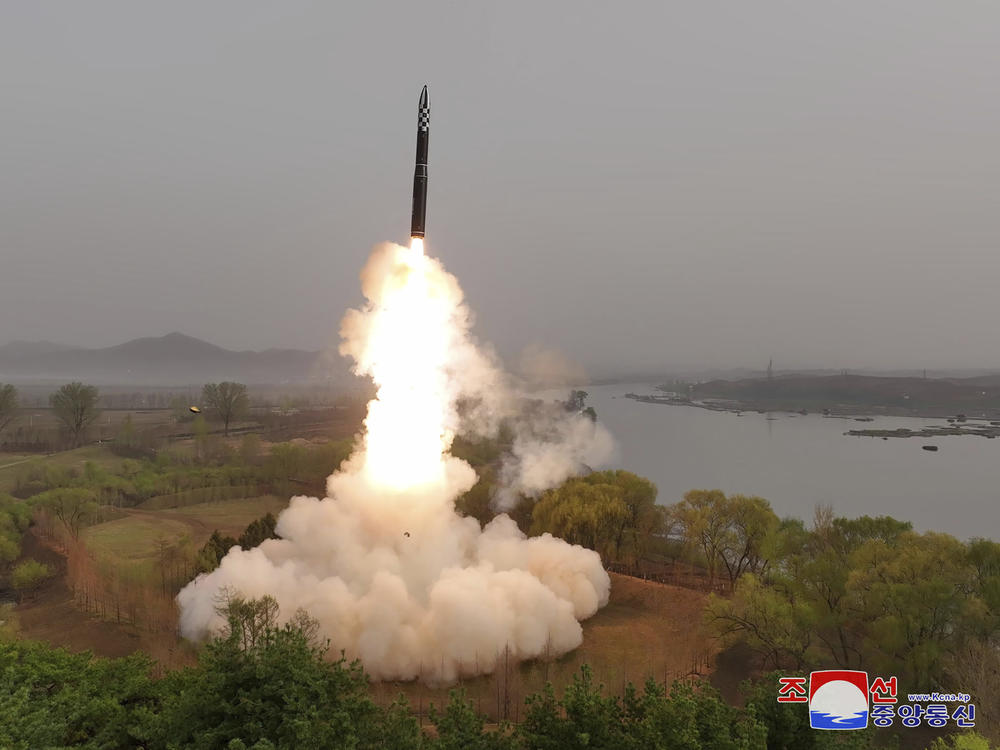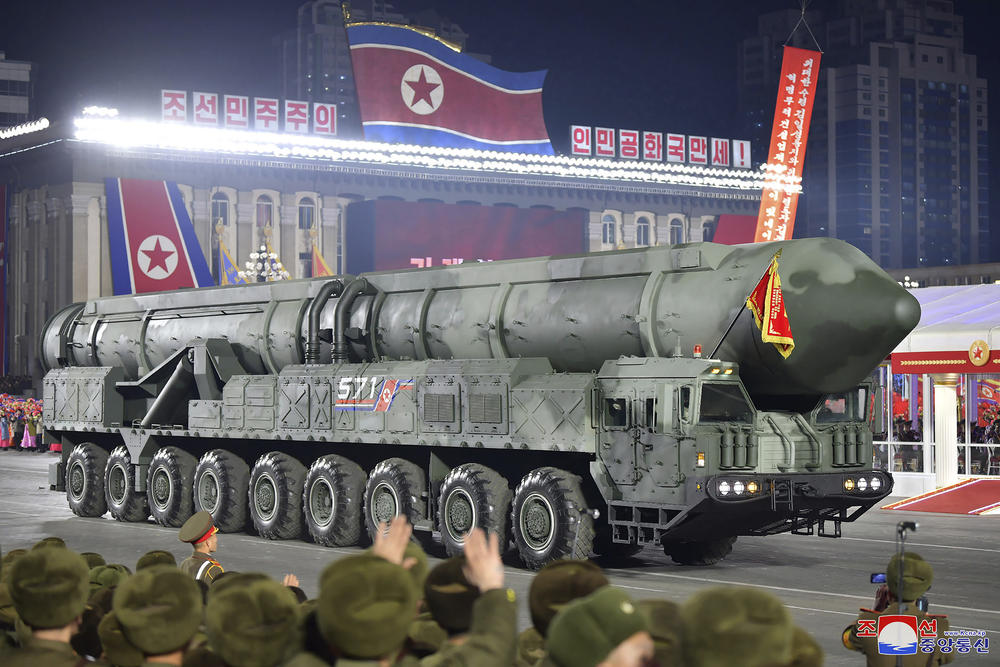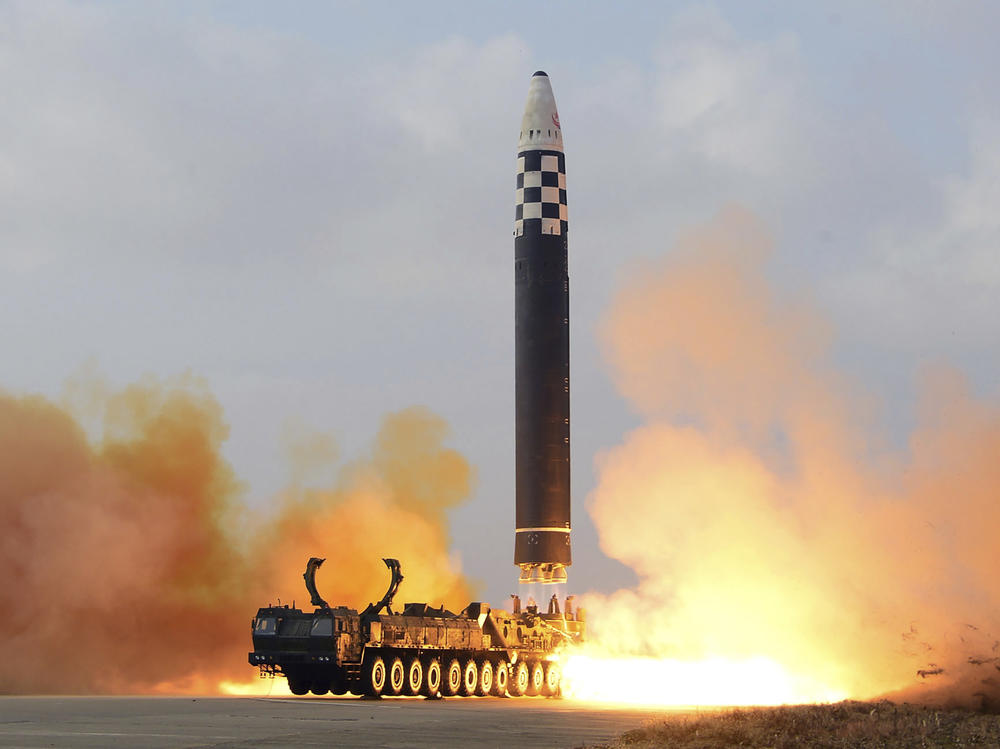Section Branding
Header Content
North Korea tests a powerful new kind of missile
Primary Content
Updated April 13, 2023 at 10:03 PM ET
North Korea says it has successfully tested a new type of intercontinental ballistic missile (ICBM) that can be launched far more quickly than the ones in its current arsenal.
Experts say the missile, which uses solid fuel as opposed to liquid, is a major milestone for the nation's military and will greatly strengthen its already formidable nuclear arsenal.
"It's just going to be much, much harder for the United States to ultimately find and destroy these missiles in a conflict," says Jeffrey Lewis, an expert on North Korea's nuclear program at the Middlebury Institute of International Studies at Monterey. "That gives North Korea a much better deterrence."
The test took place on Thursday morning, local time. The missile appears to have flown at a high angle far above the Earth, according to Japan's Ministry of Defense. Its flight path caused it to briefly trigger an alert on the Japanese island of Hokkaido. North Korea typically tests its long-range missiles on so-called "lofted trajectories" that go almost straight up instead of traveling for long distances around the Earth.
Photos released by North Korean state media showed the missile to be a previously unknown type of solid-fueled missile, which it described as the Hwasong-18. The photos show the missile lifting off as North Korean leader Kim Jong Un watches on with his young daughter. Experts have geolocated the launch site to a field near the North Korean capital of Pyongyang.
Lewis says many North Korea watchers had been expecting the test. "North Korea has indicated that it has been building solid propellant ICBMs for several years now," he says.
But nonetheless, it represents a huge leap in the North's nuclear capabilities. Until now, North Korea had relied on large, liquid-fueled missiles to launch its nuclear weapons towards the U.S. Those missiles require fueling before launch – a process that can take potentially an hour or more to complete. In addition, each missile has to be escorted by a convoy of fuel trucks, making them easy targets for any adversary trying to take them out.
Not so for solid-fueled missiles. The propellant in these weapons is loaded in the factory and remains stable until it is lit. That means the missiles don't need an escort of tank trucks, and can be launched as soon as they're erected – usually a matter of tens of minutes, according to Lewis.
Developing large-diameter solid fueled missiles is a difficult task, Lewis says. "I think it's a lot harder to develop an effective solid-propellent ICBM than it is to develop a nuclear weapon to go on it," he says. Nevertheless, the North has been making steady progress. Last month, it successfully launched a submarine-based missile that was also solid-fueled.
Lewis says it's difficult to say what the political effect of the new missile will be. On the one hand, such a weapon is far more threatening to the U.S. than a liquid-fueled missile, but that very fact may make Kim Jong Un's regime feel more secure.
Regardless, he says, the missile shows that U.S. efforts to keep North Korea from developing advanced nuclear technology have largely failed. "I think we are well past the point where we have any leverage to get North Korea to stop its development of nuclear systems," he says. "There aren't any real fundamental show-stopping technical barriers."
Copyright 2023 NPR. To see more, visit https://www.npr.org.



